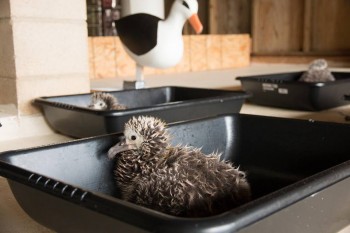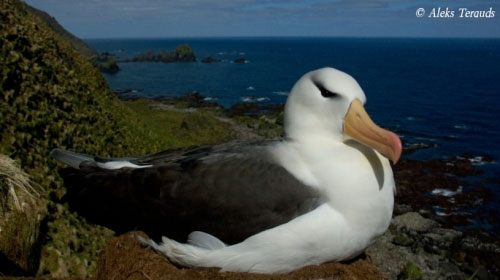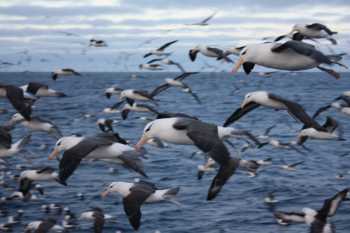Rémi Fay (Centre d'Etudes Biologiques de Chizé, Villiers-en-Bois, France) and colleagues have published in the journal Ecological Monographs on differences in the quality of life-history traits in the Wandering Albatross Diomedea exulans.
The paper’s abstract follows:
“Although population studies have long assumed that all individuals of a given sex and age are identical, ignoring among-individual differences may strongly bias our perception of eco-evolutionary processes. Individual heterogeneity, often referred to as individual quality, has received increasing research attention in the last decades. However, there are still substantial gaps in our current knowledge. For example, there is little information on how individual heterogeneity influences various life-history traits simultaneously, and studies describing individual heterogeneity in wild populations are generally not able to jointly identify possible sources of this variation. Here, based on a mark-recapture data set of 9,685 known-aged wandering albatrosses (Diomedea exulans), we investigated the existence of individual quality over the whole life cycle of this species, from early-life to senescence. Using finite mixture models, we investigated the expression of individual heterogeneity in various demographic traits, and examined the origin of these among-individual differences by considering the natal environmental conditions. We found that some individuals consistently outperformed others during most of their life. At old age, however, senescence rate was stronger in males that showed high demographic performance at younger ages. Variation in individual quality seemed strongly affected by extrinsic factors experienced during the ontogenetic period. We found that individuals born in years with high population density tended to have lower performances during their lifespan, suggesting delayed density dependence effects through individual quality. Our study showed that among-individual differences could be important in structuring individual life history trajectories, with substantial consequences at higher ecological levels such as population dynamics.”

A Wandering Albatross at its nest, photograph by Kate Lawrence
Reference:
Fay, R., Barbraud, C., Delord, K. & Weimerskirch, H. 2017. From early-life to senescence: individual heterogeneity in a long-lived seabird. Ecological Monographs. doi:10.1002/ecm.1275F.
John Cooper, ACAP Information Officer, 22 September 2017

 English
English  Français
Français  Español
Español 


